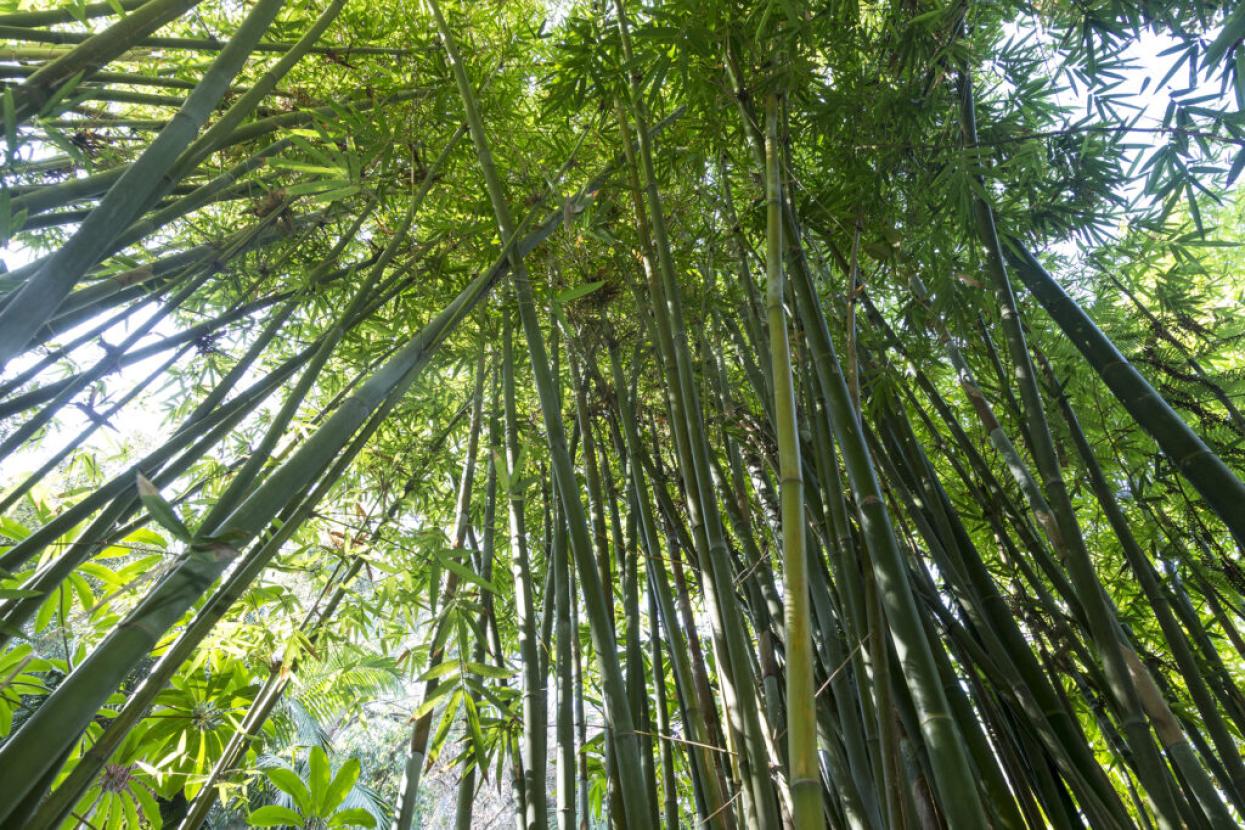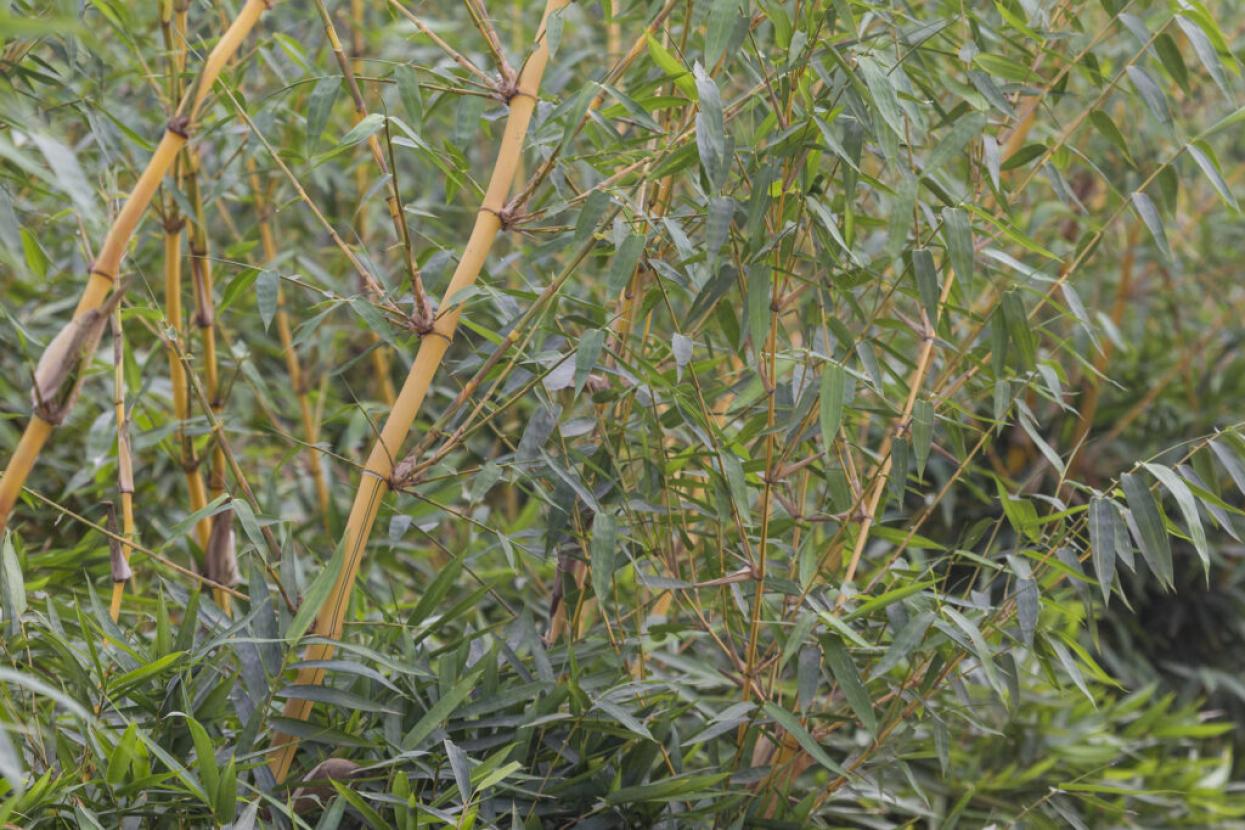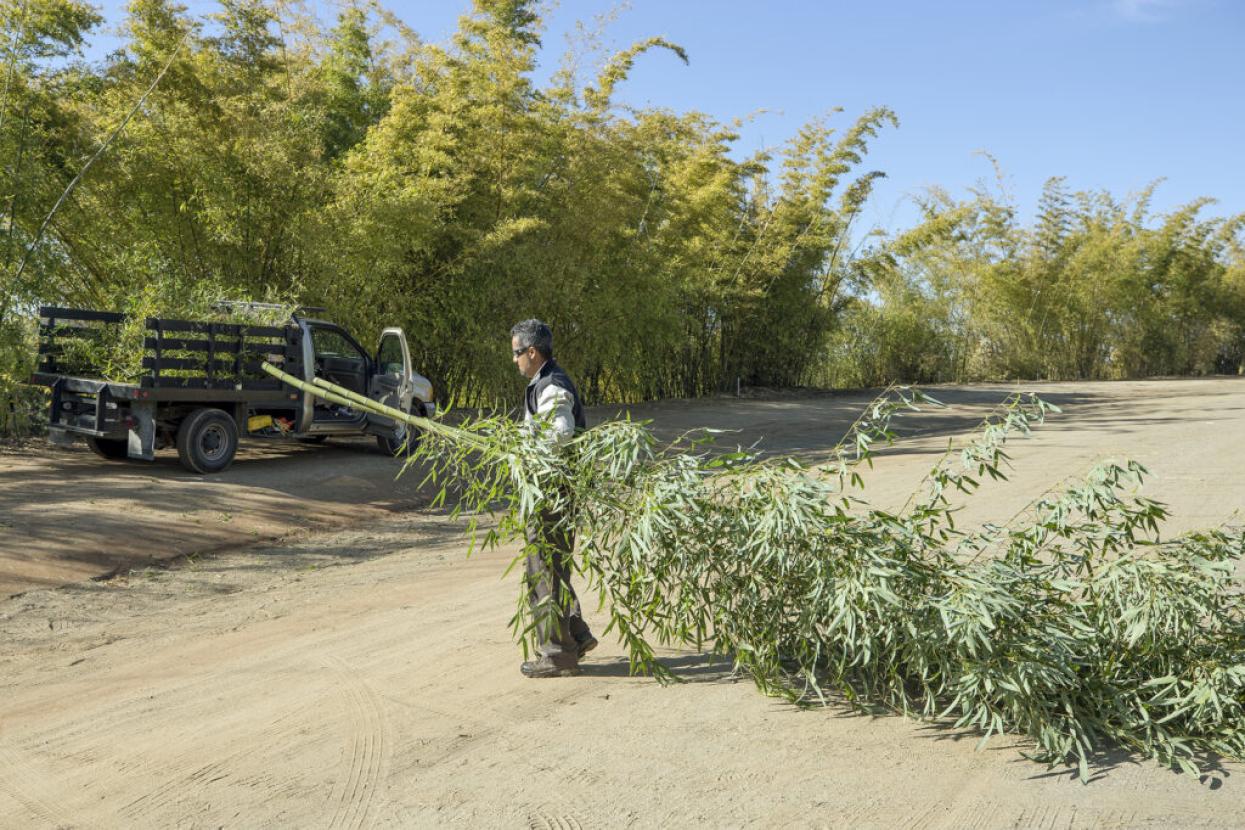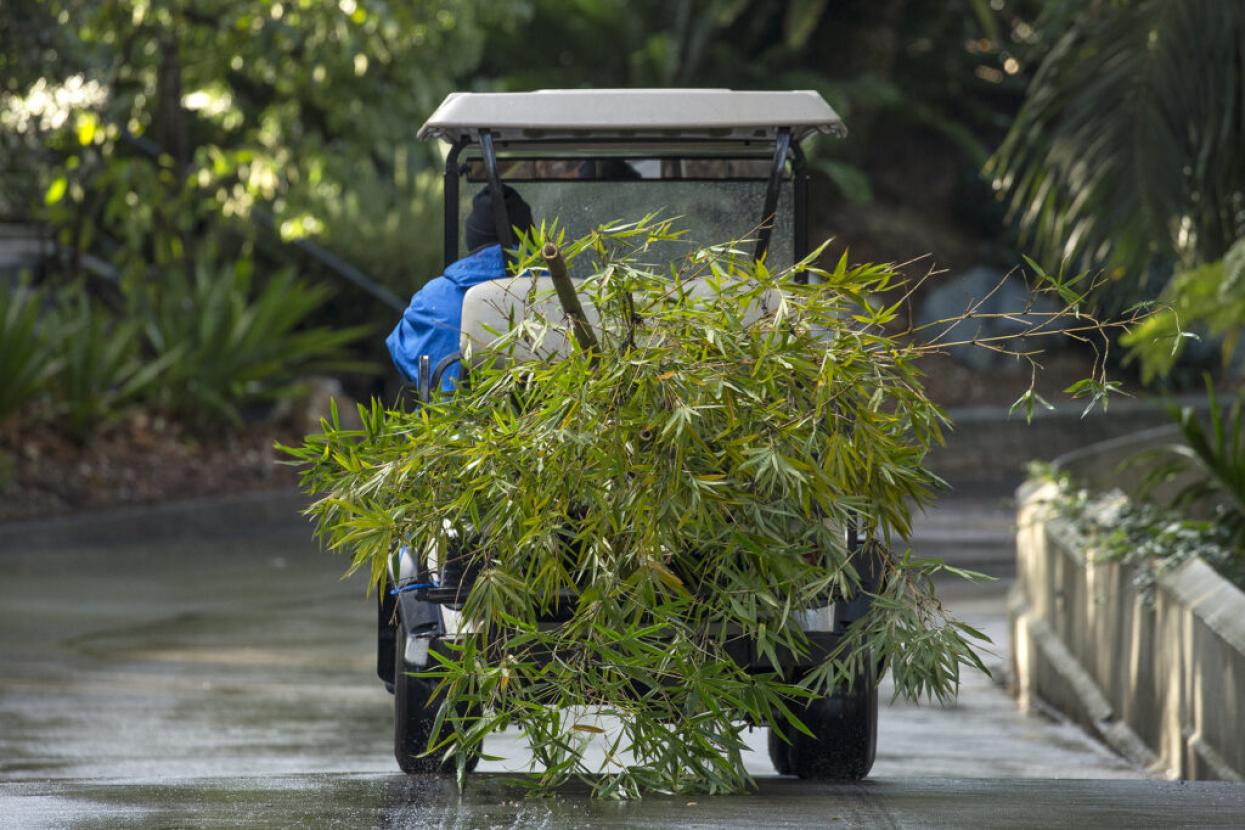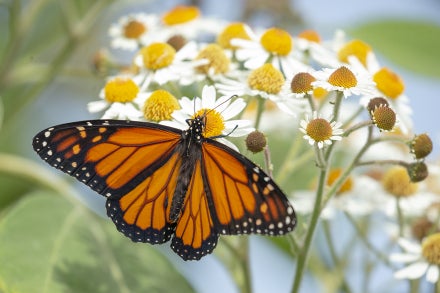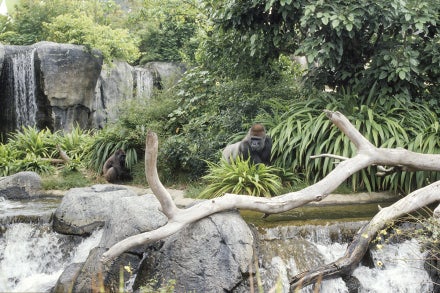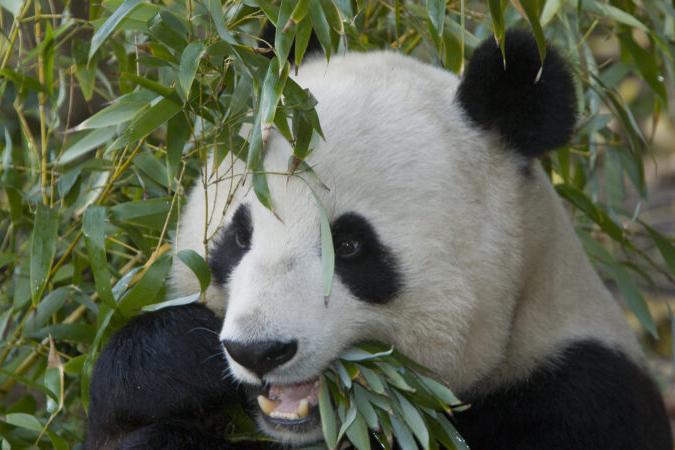
There’s absolutely, without a doubt, one thing that giant pandas must have in order to thrive: bamboo. This special plant is not just their preferred food, it makes up about 99 percent of their diet. Pandas spend 10 to 14 hours per day munching away on the thick stems, called “culms,” as well as young, protein-rich shoots and leaves. Pandas have unique physical adaptations to help them eat bamboo, such as large, flat molars used to grind the woody stems and a “pseudo-thumb” for holding and manipulating the plant as they eat. These facts add extra confirmation to what’s already obvious to anyone who’s ever had the opportunity to experience pandas—bamboo is central to their existence.
In offering world-class care for giant pandas at the San Diego Zoo, our teams go to great lengths to grow a large variety of fresh bamboo in-house. We’re not just talking about a small patch of plants near their habitat, but nearly a dozen species of bamboo grown across six acres of dedicated land at the San Diego Zoo and San Diego Zoo Safari Park. On top of that, our teams grow over a hundred additional species of ornamental bamboo as part of our accredited botanical collection that can also be harvested for giant pandas. This extraordinary undertaking helps us offer several hundred pounds of homegrown, pesticide-free bamboo to giant pandas every single day.
Horticulture teams grow bamboo on several sites at both the San Diego Zoo and San Diego Zoo Safari Park as part of caring for giant pandas.
Collaboration makes all the difference in this incredible undertaking. To start, our horticulture teams consult with our nutrition and wildlife care specialists to determine which species of bamboo to grow and harvest as browse (plants to eat) for giant pandas. They consider which plants offer ideal nutrition, what we can reliably source and grow in our climate, and the preferences of individual pandas.
When considering nutrition for wildlife, our nutrition specialists take a comprehensive approach, building upon knowledge from a wide range of sources such as natural history documentation by field biologists, published studies from other wildlife health and care experts, and our own historical records. “Our long history of caring for giant pandas is incredibly valuable for informing the varieties of bamboo to offer, how the growth of those bamboo varies seasonally (including differences between campuses), and any bamboo species or seasonal preferences that might have been observed in pandas” says San Diego Zoo Wildlife Alliance Director of Wildlife Nutrition Dr. Andrea Fidgett. With over 1,000 species found around the world, there’s a lot to choose from.
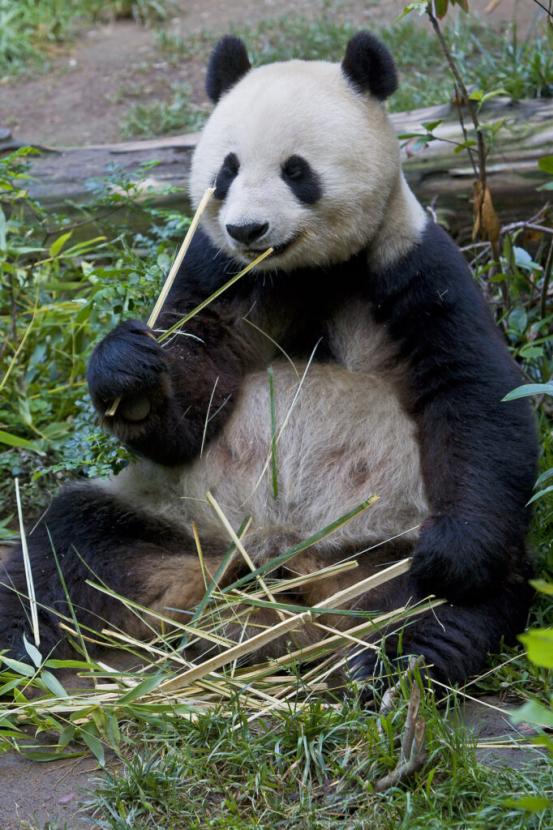
Giant Panda Bai Yun savors bamboo at the San Diego Zoo.
Giant pandas naturally eat many parts of bamboo plants, including shoots (young plants), culms (stems), and leaves. They may consume every part of a particular plant, or consume just one part such as the leaves, depending on the bamboo species, the season, and their individual preference. Many giant pandas favor shoots, which offer greater nutrition benefits while containing less fiber, making them easier to digest. In their native temperate forests, giant pandas alter their foraging behavior with seasonal changes. By keenly tuning in to the changes in their ecosystem, pandas are cued to seek new shoots in the spring, culms and leaves throughout the summer and fall, and then incorporate more mature culms in the winter when shoots and leaves become more scarce. Scientists believe this seasonal approach helps them maximize the absorption of key nutrients like calcium, phosphorus, and nitrogen.
To include a wide range of natural choices at the Zoo, our teams offer a mix of shoots, culms with young leaf growth, and more mature culms. According to Dr. Fidgett, “Though there are distinct growing seasons for shoots, we’re fortunate that our climate extends these periods, and by having a large variety and volume of bamboo growing, we can offer nutritious bamboo year-round.” The Zoo has many “microclimates” throughout the campus, allowing us to grow a wide range of bamboo species with careful planning. In addition to location, timing plays a crucial role. To grow enough bamboo for giant pandas, our browse specialists must strike a delicate balance between growth and harvest, planning each step in the process with precision.
Bambusa vulgaris vittata, or “Painted Bamboo” grown on site.
Temperate bamboo grows soft new shoots in the spring and grows rapidly for sixty days, producing new limbs and leaves. Then, after those initial sixty days, it matures, hardens, and stops growing completely. “Timing plays a critical role when harvesting bamboo,” says San Diego Zoo Safari Park Senior Horticulturist Jena Colvin. “To harvest shoots, it’s best to pick the plump green ones poking about three to four feet above the ground. We catch the fresh new growth before it gets too woody, but old enough to have substance to them.” When harvesting mature culms, browse specialists remove the plant at its base and prune the foliage parts into three to six-foot-long sections. However, knowing when to harvest can prove tricky. Missing a fertilization window before new shoots form, or damaging new shoots before they mature, could mean waiting an entire year before trying again.
“Bamboo grows with momentum,” said Greg Porter, arborist and browse manager for the San Diego Zoo. “When cultivated correctly, new shoots that come up next year will be a little taller and larger in diameter than this year’s culm.” Each year, the bamboo grows progressively larger, and repeats that cycle until it reaches its maximum size. “We must moderate how much we harvest so we don’t break the plant’s momentum,” said Greg, “while also meeting the nutritional needs of pandas who eat little else.”
A horticulturist harvests bamboo at the San Diego Zoo Safari Park for giant pandas.
The day-to-day work of farming bamboo for pandas involves a joint effort between our teams at the Zoo and Safari Park. The Zoo team meets with wildlife care specialists to determine which species to harvest, working together to optimize variety and volume. The Zoo and Park browse teams, or “browsers,” then meet at the Safari Park to harvest the day’s provision. If you’ve ever pulled weeds in a garden, perhaps you can imagine the back-breaking work it takes to harvest a large, hardy plant like bamboo. “Farming bamboo requires patience, precision, and more than a little grit,” said Greg. “Bamboo twigs are notorious for scratching and whipping the horticulturists who work in their groves. Bamboo culm is hard! It takes tremendous dexterity and endurance to harvest and maintain bamboo, especially at the volume required to feed giant pandas.”
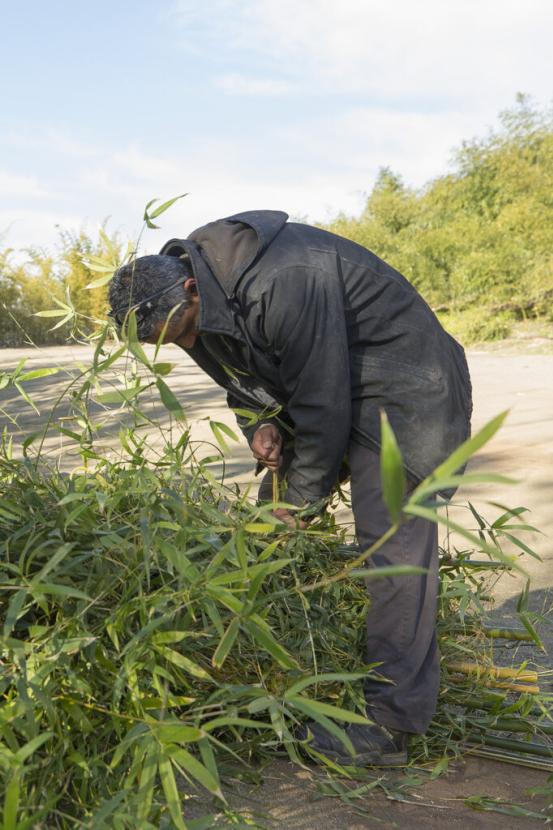
Maintaining and harvesting woody bamboo takes strength and grit.
After browsers finish gathering the harvest, the Zoo team heads south for delivery, while the Park team remains in the groves to maintain bamboo. The plant’s rapid growth rate, water requirements, and large network of underground roots and buried stems, called rhizomes, make careful maintenance essential. To keep roadways, footpaths, and irrigation clear of running bamboos, browsers dig up roots and rhizomes. When watering, riding the line between plant health and water conservation can prove challenging, but our horticulturists have the expertise to factor this into their planning. They adjust their watering schedules often, ensuring optimum hydration while minimizing runoff.
A team member drives bamboo toward the giant panda habitat for delivery.
This physically demanding work requires the full-time dedication of browse specialists, plus regular collaboration from team members in horticulture, wildlife care, and nutrition. Offering a large volume of browse for giant pandas year-round requires a variety of nuanced farming techniques that tackle challenges from multiple angles. While it’s an immense investment, we view our browse program as a critical part of offering comprehensive care for wildlife. From health and wellness to diet and socialization, every part of an individual’s experience matters greatly. And for giant pandas, few things matter as much as bamboo.
To discover more about growing bamboo for giant pandas, visit Denny Sanford Panda Ridge at the San Diego Zoo, opening August 8. You can help save giant pandas and the bamboo forests they rely on by joining us as an ally for wildlife at sdzwa.org.

